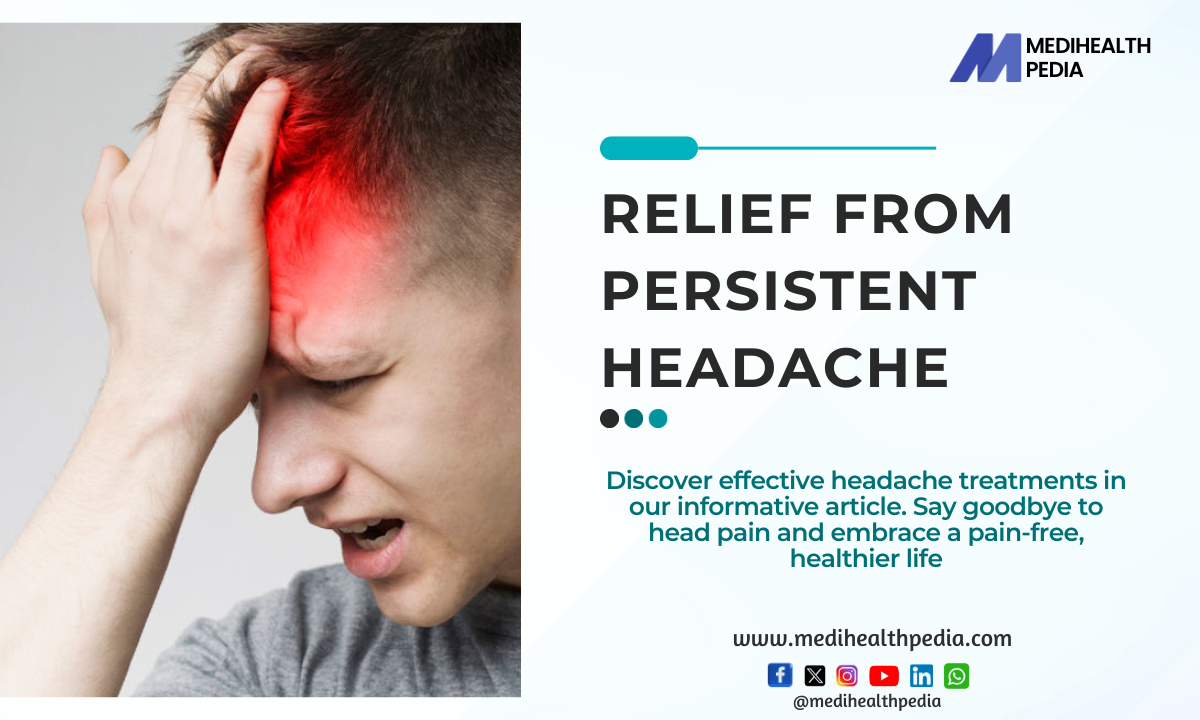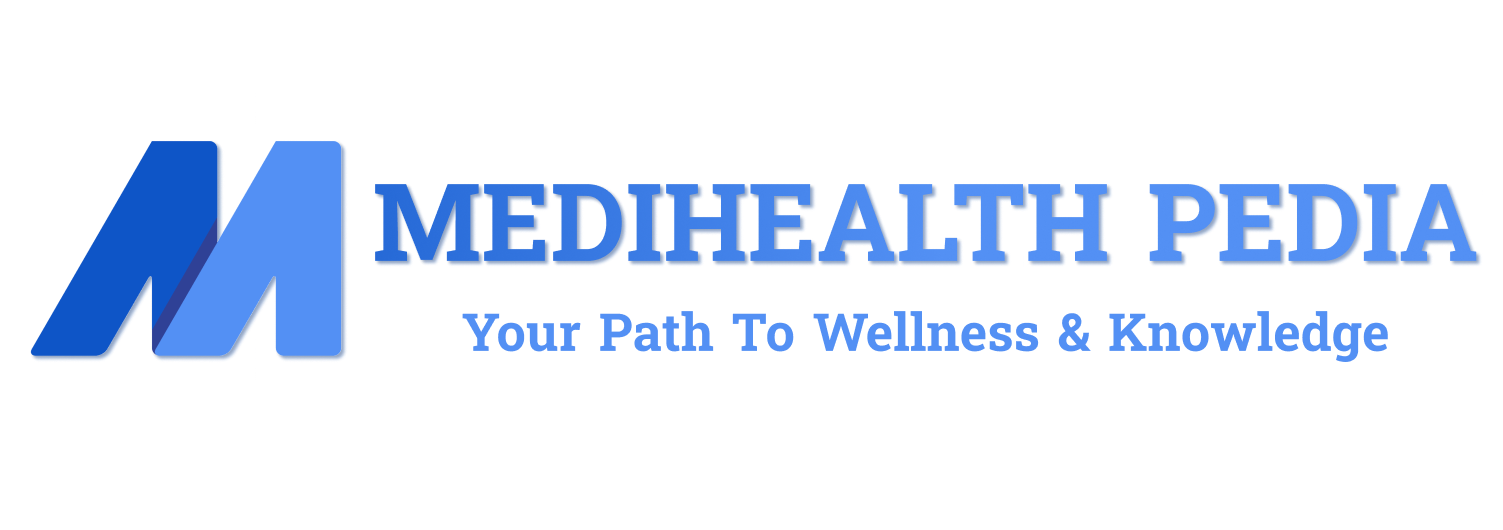Understanding Headaches: Types, Clinical Overview, and Holistic Approaches to Relief
Introduction
Headaches are a common ailment that almost everyone experiences at some point in their lives. These unwelcome intruders can vary in intensity, duration, and cause, making them a complex and often misunderstood condition. In this comprehensive guide, we will explore the various types of headaches, their clinical presentations, basic investigations, conventional treatments, preventive measures, herbal remedies, lifestyle modifications, and provide a well-rounded conclusion to help you better understand and manage this common malady.

Types of Headaches
Headaches are categorized into several types, each with its unique characteristics and underlying causes. Understanding these types is crucial for proper diagnosis and treatment. The major types of headaches include:
- Tension Headaches:
- Clinical Overview: Tension headaches are the most common type, characterized by a dull, aching pain that typically affects both sides of the head. The pain is often described as a band squeezing the head.
- Clinical Presentation: Patients may experience mild to moderate pain, often accompanied by muscle tension in the neck and shoulders. Stress, poor posture, and anxiety are common triggers.
- Basic Investigations: Diagnosis is primarily clinical. Physicians may perform a physical examination to rule out other causes.
- Conventional Treatment: Over-the-counter pain relievers, stress management techniques, and lifestyle changes are often recommended.
- Migraine Headaches:
- Clinical Overview: Migraines are intense, throbbing headaches that can be debilitating. They often come with other symptoms like nausea, vomiting, and sensitivity to light and sound.
- Clinical Presentation: Migraines are typically one-sided and can last for hours or even days. They may be preceded by an “aura” – visual disturbances or other sensory changes.
- Basic Investigations: Diagnosis is based on a patient’s description of symptoms and may involve eliminating other potential causes.
- Conventional Treatment: Prescription medications like triptans and preventive medications are commonly used to manage migraines. Lifestyle changes and avoiding triggers play a significant role.
- Cluster Headaches:
- Clinical Overview: Cluster headaches are excruciating and occur in clusters, usually at the same time of day or night. They’re rare but considered one of the most severe headache types.
- Clinical Presentation: The pain is typically intense and focused around one eye. It can be accompanied by symptoms like nasal congestion and watery eyes.
- Basic Investigations: A thorough medical history and physical examination are essential for diagnosis.
- Conventional Treatment: High-flow oxygen therapy, prescription medications like triptans, and preventive medications are commonly used to manage cluster headaches.
- Sinus Headaches:
- Clinical Overview: Sinus headaches are associated with sinusitis, which is an inflammation of the sinuses. These headaches usually occur alongside other sinus symptoms.
- Clinical Presentation: Pain is usually in the forehead, cheekbones, or the bridge of the nose. It worsens with head movement and may be accompanied by nasal congestion and fever.
- Basic Investigations: An evaluation by a healthcare professional is necessary to determine if a sinus infection is the cause.
- Conventional Treatment: Treatment typically involves addressing the underlying sinus infection with antibiotics and decongestants.
- Hormone-Related Headaches:
- Clinical Overview: These headaches are triggered by hormonal changes, most commonly in women during menstruation, pregnancy, or menopause.
- Clinical Presentation: The pain can vary in intensity and often accompanies other hormonal symptoms.
- Basic Investigations: Diagnosis relies on the patient’s medical history and the temporal relationship between the headaches and hormonal changes.
- Conventional Treatment: Managing hormone-related headaches may involve hormonal therapy, pain relievers, and lifestyle adjustments.
- Rebound Headaches:
- Clinical Overview: Rebound headaches are a result of overusing pain medications. They typically occur when people rely too heavily on pain relievers.
- Clinical Presentation: These headaches often become more frequent and severe when medications wear off.
- Basic Investigations: Medical professionals assess the patient’s medication use and may perform additional tests to rule out other conditions.
- Conventional Treatment: Treatment involves discontinuing the offending medications and may require a gradual tapering of the drugs.
- Chronic Daily Headaches:
- Clinical Overview: Chronic daily headaches are those that occur 15 days or more per month for at least three months.
- Clinical Presentation: The pain can vary in type and intensity, often causing disability and a diminished quality of life.
- Basic Investigations: A detailed history, physical examination, and, in some cases, imaging studies are essential for diagnosis.
- Conventional Treatment: Treatment often includes preventive medications, lifestyle changes, and managing underlying causes, such as sleep disorders.
- Secondary Headaches:
- Clinical Overview: Secondary headaches result from underlying medical conditions, such as head trauma, vascular issues, or infections.
- Clinical Presentation: Symptoms depend on the underlying cause and can vary significantly.
- Basic Investigations: Comprehensive diagnostic workup is necessary to identify and address the root cause.
- Conventional Treatment: Treatment depends on the underlying condition and may include medications, surgery, or other medical interventions.
Clinical Presentation and Basic Investigations
The clinical presentation of headaches varies greatly depending on the type. It’s essential to understand these presentations to differentiate between different headache types and make accurate diagnoses.
Tension headaches often present as a constant, dull ache that can range from mild to moderate in intensity. Patients may describe a sensation of pressure or tightness around the head. Tension headaches can last for several hours or even days.
Migraine headaches, on the other hand, are typically characterized by severe, throbbing pain, often on one side of the head. They may be accompanied by other symptoms, including nausea, vomiting, and sensitivity to light and sound. Some individuals experience an “aura” before the migraine, which includes visual disturbances or other sensory changes.
Cluster headaches present as intensely sharp, one-sided pain, usually around or behind one eye. This pain can be excruciating and is often described as “stabbing” or “burning.” Cluster headaches often occur in clusters over a period, followed by remission periods.
Sinus headaches are associated with sinusitis and typically involve pain in the forehead, cheekbones, or the bridge of the nose. This pain worsens with head movement and may be accompanied by symptoms like nasal congestion, fever, and a feeling of facial fullness.
Hormone-related headaches often occur in women and are closely tied to hormonal fluctuations. These headaches may vary in intensity and typically accompany other hormonal symptoms, such as menstrual cramps.
Rebound headaches result from the overuse of pain medications. They usually become more frequent and severe when the effect of the medication wears off, leading to a cycle of medication use and worsening headaches.
Chronic daily headaches, as the name suggests, occur frequently, causing persistent pain that can affect daily life. These headaches can have various characteristics, and patients may experience different types of headaches on different days.
Secondary headaches have diverse clinical presentations depending on the underlying condition. For instance, a headache due to head trauma may present with other neurological symptoms, while one related to a vascular issue may manifest differently.
Basic investigations for headaches often begin with a detailed medical history and physical examination. Additional investigations may include:
- Imaging: MRI or CT scans to rule out structural issues in the brain or sinuses.
- Blood Tests: To check for infections, hormone levels, or other underlying conditions.
- Lumbar Puncture: Sometimes used to check for cerebrospinal fluid abnormalities in cases of suspected meningitis or other neurological conditions.
Conventional Treatment
The treatment for headaches varies depending on the type and underlying cause. Conventional treatments may include:
- Medications:
- Pain Relievers: Over-the-counter pain relievers like ibuprofen, acetaminophen, and aspirin can help manage tension headaches and mild migraines.
- Prescription Medications: For severe or recurrent headaches, physicians may prescribe stronger medications, such as triptans for migraines, and preventive medications for chronic or frequent headaches.
- Abortive Medications: These are used to stop a headache once it has begun. Examples include triptans and ergotamine derivatives.
- Lifestyle Modifications:
- Stress Management: Learning stress-reduction techniques like relaxation exercises, meditation, and yoga can help reduce tension headache frequency.
- Sleep Hygiene: Ensuring good sleep patterns can prevent headaches.
- Dietary Adjustments: Identifying and avoiding trigger foods for migraines can be effective.
- Hydration:
- Staying adequately hydrated is essential for overall health and can help prevent headaches.
- Regular Exercise: Regular physical activity can reduce the frequency and severity of tension headaches.
- Alternative Therapies:
- Biofeedback: This technique helps individuals learn how to control physiological functions to reduce pain.
- Acupuncture: Some find relief through acupuncture sessions.
- Chiropractic Care: For tension headaches caused by musculoskeletal issues, chiropractic care may be beneficial.
- Behavioral Therapy:
- Cognitive Behavioral Therapy (CBT): CBT can be effective in managing chronic headaches, especially those with a significant psychological component.
- Trigger Management:
- Identifying and managing headache triggers can be an essential aspect of treatment. For example, avoiding certain foods or making changes in your work environment can help.
Prevention
Preventing headaches is often a more desirable approach than treating them, especially when they become chronic or recurrent. Preventive measures can include:
- Identify and Avoid Triggers:
- Keep a headache diary to track potential triggers and patterns.
- Avoid known triggers, such as specific foods or environmental factors.
- Stress Management:
- Practice stress-reduction techniques like mindfulness, meditation, and progressive muscle relaxation.
- Dietary Adjustments:
- Identify and avoid foods that trigger headaches. Common culprits include caffeine, alcohol, and processed foods.
- Sleep Hygiene:
- Maintain a regular sleep schedule and create a conducive sleep environment.
- Hydration:
- Drink enough water throughout the day to stay properly hydrated.
- Regular Exercise:
- Engage in regular physical activity to reduce stress and promote overall well-being.
Herbal Medicines for Headache Treatment
In addition to conventional treatments and lifestyle modifications, herbal remedies have been used for centuries to alleviate headaches. It’s important to note that herbal treatments should be used with caution, and consultation with a healthcare professional is advisable before incorporating them into your headache management plan. Some herbal remedies that are commonly considered for headache relief include:
- Peppermint Oil:
- Applied topically to the temples and forehead, peppermint oil can provide a cooling sensation that may help ease tension headaches.
- Feverfew:
- This herb is often used as a preventive treatment for migraines. It can be taken in various forms, including capsules, teas, or tinctures.
- Butterbur:
- Butterbur supplements have shown promise in reducing the frequency and severity of migraines when taken as a preventive measure.
- Ginger:
- Ginger has anti-inflammatory properties and may help relieve headache symptoms. It can be consumed as a tea or added to meals.
- Willow Bark:
- Willow bark contains salicin, a compound similar to aspirin, which may provide relief from various types of headaches.
- Lavender Oil:
- Lavender oil can be inhaled or applied topically to promote relaxation and reduce headache symptoms.
- Ginkgo Biloba:
- This herb may improve blood circulation and reduce the frequency and severity of migraines.
Lifestyle Modifications
Lifestyle plays a significant role in managing and preventing headaches. Making the following lifestyle adjustments can help reduce the frequency and severity of headaches:
- Regular Sleep Schedule:
- Maintain a consistent sleep routine, going to bed and waking up at the same times every day.
- Stay Hydrated:
- Drink an adequate amount of water daily, and limit the consumption of caffeinated and alcoholic beverages.
- Dietary Choices:
- Identify and avoid trigger foods that may be contributing to your headaches.
- Stress Reduction:
- Engage in stress-reduction techniques, such as mindfulness, meditation, and deep breathing exercises.
- Regular Exercise:
- Incorporate physical activity into your routine to reduce stress and promote overall well-being.
- Ergonomics:
- Maintain proper posture, especially if you work at a desk or use a computer extensively. Ensure your workspace is ergonomically designed to reduce tension headaches.
- Limit Screen Time:
- Excessive screen time, especially on electronic devices, can contribute to eye strain and trigger headaches. Take breaks and practice the 20-20-20 rule (every 20 minutes, look at something 20 feet away for 20 seconds) to reduce eye strain.
Conclusion
Headaches are a common and complex condition that can significantly impact a person’s quality of life. Understanding the different types of headaches, their clinical presentations, and potential triggers is essential for proper diagnosis and effective management. Conventional treatments, such as medications and lifestyle adjustments, can provide relief, while preventive measures help reduce the frequency of headaches.
Incorporating herbal remedies into your treatment plan should be done with caution and under the guidance of a healthcare professional. Lifestyle modifications, including stress management, a healthy diet, and regular exercise, are crucial for preventing headaches and promoting overall well-being.
If you suffer from persistent or severe headaches, it’s essential to consult a healthcare provider for a proper diagnosis and personalized treatment plan. By combining conventional and holistic approaches, you can better manage and alleviate the pain of headaches and improve your overall well-being.

